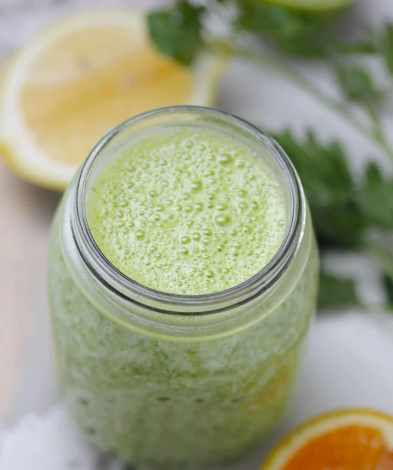
Juices vs. Smoothies: Which One is Healthier?
If you’ve ever wondered whether juices or smoothies are the healthier option, you’re not alone. With both becoming popular staples in many wellness routines, it can be hard to know which one best supports your health goals. I’ve been incorporating both into my diet for over 16 years, ever since I was searching for ways to boost my nutrition after a cancer diagnosis. Since then, these drinks have remained a key part of my daily routine, and they also play a role in the wellness plans I create.
While both options offer distinct health benefits, it’s important to understand the differences between juicing and blending to determine which one is right for you.
The Power of Juicing
Juicing involves extracting the liquid from fruits and vegetables, leaving most of the fiber behind. Without the fiber, the nutrients—such as vitamins, minerals, and enzymes—are absorbed quickly by your body. This makes juices particularly effective when consumed in the morning, before any solid food enters your digestive system. Juices can pack in a large volume of veggies, which would be challenging to consume in solid form, even for the hungriest of appetites.
Juices also provide your digestive system a break from processing fiber, which can be taxing on your body. It’s a great option if you want to give your digestive system a little rest. While fiber is essential for digestion, if you’re transitioning to a more plant-based diet, juicing can help you ease into consuming large amounts of vegetables without digestive discomfort. Additionally, some people may find smoothies’ textures off-putting, in which case juicing is a great alternative.
However, juices are not complete meals. While they can be a refreshing start to your day, you may want to pair them with a healthy snack later to keep your energy levels steady. To avoid excessive sugar, try using more vegetables than fruits in your juices. Aim for three servings of veggies for every one serving of fruit to keep the sugar content in check. Vegetables like romaine, carrots, lemon, or ginger can add natural sweetness without the sugar overload.
The Benefits of Smoothies
On the other hand, smoothies retain all the fiber from fruits and vegetables. This is a key advantage because fiber helps regulate the absorption of sugars into the bloodstream, making smoothies a great option for those who want steady energy throughout the day. The fiber also supports digestion, making smoothies an excellent choice for gut health.
Another perk of smoothies is their versatility. You can blend ingredients that can’t easily be juiced, such as nuts, seeds, and superfood powders. These additions can give your smoothie a powerful nutritional boost. For example, adding nut butter or protein powder can make smoothies more filling, turning them into a complete, balanced meal. This makes them a good option if you’re looking for something more substantial and longer-lasting than a juice.
A typical smoothie recipe might include leafy greens like spinach or kale, frozen fruit such as berries or mango, and a creamy element like banana or avocado. Add a liquid of your choice, such as coconut water or unsweetened almond milk, and you’ve got a nutrient-packed drink that can be customized to suit your taste and nutritional needs.
Juicing vs. Blending: Which is Better?
Both juicing and blending are fantastic ways to incorporate more fruits and vegetables into your diet. They both offer unique benefits, and the key is to use both methods to create a balanced, plant-powered diet.
Juicing Benefits:
- Delivers a quick, nutrient-rich boost that’s easy to digest.
- Great for sensitive digestive systems or when transitioning to more plant-based foods.
- Can pack in far more fruits and vegetables than you could reasonably eat in a meal.
Smoothie Benefits:
- Retains fiber, which aids digestion and keeps you full longer.
- Can serve as a complete meal with protein, healthy fats, and other nutrients.
- Allows for the addition of ingredients that juicers can’t handle, such as seeds, nut butters, and superfoods.
- Blenders are typically easier to clean than juicers, making smoothies a more convenient option for busy individuals.
Conclusion
Ultimately, both juices and smoothies can play an important role in your health and wellness journey. Juices are excellent for a quick nutrient boost, while smoothies offer fiber and the ability to create filling, meal-like drinks. The key is to enjoy both in a way that suits your lifestyle, taste preferences, and nutritional needs. Whether you’re sipping on a green juice in the morning or blending a hearty smoothie for lunch, both options will help you increase your intake of nutrient-rich produce.
So, why choose just one when you can enjoy both? Experiment with different combinations and find what works best for your body. After all, variety is the spice of life—and it makes sticking to healthy habits a lot more fun!






